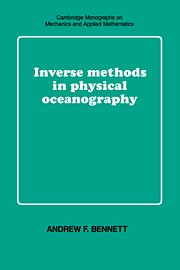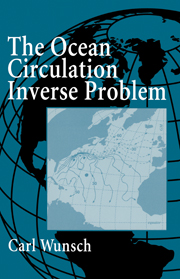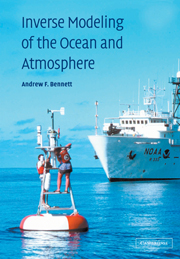Inverse Methods in Physical Oceanography
Observations of ocean circulation have increased as a result of international field programmes and of remote sensing systems on artificial earth satellites. Oceanographers are increasingly turning to inverse methods for combining these observations with numerical models of ocean circulation. Professor Bennett's work explores the potential for inverse theory, emphasizing possibilities rather than expedient or rudimentary applications. In addition to interpolating the data and adding realism to the model solutions, the methods can yield estimates for unobserved flow variables, forcing fields, and model parameters. Inverse formulations can resolve ill-posed modelling problems, lead to design criteria for oceanic observing systems, and enable the testing of models as scientific hypothesis. Exercises of varying difficulty rehearse technical skills and supplement the central theoretical development. Thus this book will be invaluable for environmental scientists and engineers, advanced undergraduates in applied mathematics, and graduate students in physical oceanography.
- Rigorous mathematical treatment of the subject
- Well-respected author
- Covers important topics in both oceanography and meteorology
Reviews & endorsements
"...gives an excellent overview of how certain techniques that have been applied to other inverse problems can be applied to tackle inverse problems arising in oceanography....accessible to well-prepared graduate students, researchers, and applied mathematicians." Fadil Santosa, Applied Mechanics Review
"...could fill an important niche in the literature." John Derber, Bulletin of the American Meteorological Society
"Oceanographers and meteorologists...will find that there is no substitute for this book." M. Ghil and C.L. Keppenne, PAGEOPH
Product details
July 1992Hardback
9780521385688
368 pages
236 × 159 × 25 mm
0.605kg
102 b/w illus. 9 tables
Available
Table of Contents
- Preface
- 1. Finite-dimensional inverse theory
- 2. The smoothing of observations
- 3. Data assimilation
- 4. The spatial structure of the Kalman filter
- 5. Generalized inverses of dynamical models
- 6. Antenna analysis
- 7. Nonlinear quasi-geostrophic models
- 8. Open-ocean modeling: quasi-geostrophy
- 9. Primitive-equation models
- 10. Outstanding problems
- Bibliography
- Subject index.








